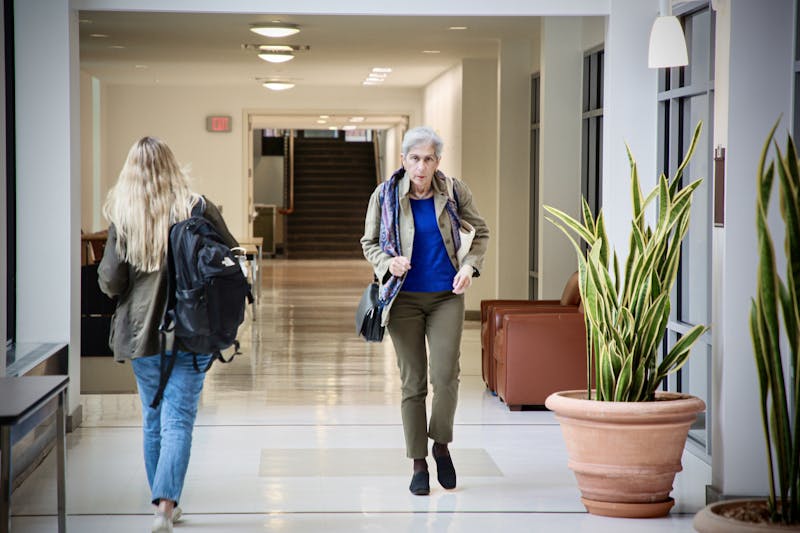
Strolling down Locust Walk on a breezy day, it's difficult not to notice that the area between the 38th Street bridge and 40th Street is abnormally windy. So windy, in fact, that umbrellas turn inside out and students brace themselves against the whip of the wind during their daily walk to class.
Professors say that the increase in wind speed is likely caused by the high rises themselves.
"The buildings channel the wind," Engineering Professor Noam Lior explained. When "you narrow the passage, the wind speeds up," he said.
He added that the primary causes of the wind are "the height of the existing buildings and where they are," although prevailing wind speed and direction also contribute to the heavy gusts.
Earth and Environmental Science Professor Robert Giegengack agreed that the buildings play a major role in the prevalence of wind on campus, likening the area between the high rises to a funnel.
"If the buildings weren't there, the wind would be less concentrated," he said.
The high concentration of wind in the area has bothered many students living in the area.
"There is definitely a wind tunnel," said Wharton senior Philip Kwan, who lives in Harnwell College House. He added that when he leaves his dormitory, "it bothers me because it makes me cold."
Although she is annoyed by the wind, Hamilton College House resident and College junior Liliana Macias said that the wind does not cause a large disturbance in her life.
"It's not really a far walk out of the wind tunnel," she said.
Lior said that several years ago a group of Engineering students did a project monitoring wind speeds in the Super Block area.
"They found that indeed the wind was much stronger, and that one could put windmills there and get power out of them," Lior explained.
However, he added that "of course, it's not so simple to install a windmill in between existing buildings in the middle of campus."
Lior conceded that "winds are difficult to predict in an urban setting," but claimed that "the architects should have known anyway when they built the buildings that there would be a problem with wind."
While both Giegengack and Lior agree that the high rises are the primary cause of the wind, they disagree on what can be done to accommodate students' complaints.
Giegengack said that in order to completely fix the problem, the University would have to knock down the buildings.
"There's nothing you can do about it now," he said.
Lior said that the problem could be reduced by "putting some trees in the area to break down the wind, and building some sort of hedges," noting that the practice is successfully used by farmers in high-wind areas.
As for the window rattling, Giegengack said that, "I'm sure there are ways to fix the windows so they rattle less, but that would be very expensive."
However, he noted that the ongoing renovations to the high rises would probably "try to minimize that effect."
Despite the renovations of Hamilton College House that were completed last summer, which included the replacement of all of the windows, many windows continue to rattle, according to College junior and Hamilton resident Amanda Nordstrom.
"The rattling is a whistling and sometimes it's just a rattling," Nordstrom said.
Even so, Nordstrom noted that the renovations have improved things. "It's not as bad as it used to be," she added.
"People have been complaining about the wind around the high rises for as long as I've been here, which is 36 years," Giegengack said, adding that students should "tie their hat strings under their necks" when they get cold.
Nordstrom agreed, saying, "It's sort of a fact of life of living here."
The Daily Pennsylvanian is an independent, student-run newspaper. Please consider making a donation to support the coverage that shapes the University. Your generosity ensures a future of strong journalism at Penn.
DonatePlease note All comments are eligible for publication in The Daily Pennsylvanian.







